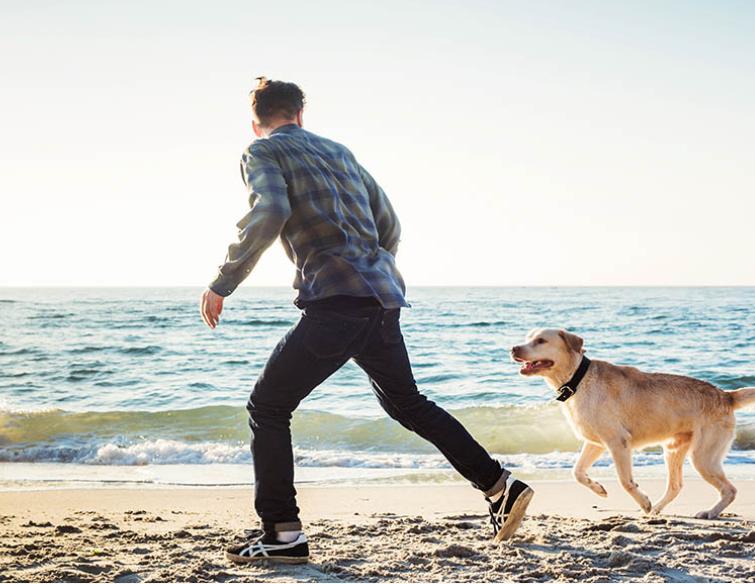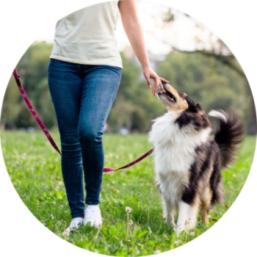Off-leash dog training provides your canine companion the freedom to explore while maintaining control over their behavior. This form of training strengthens the bond between you and your dog, promoting trust and understanding. With the right approach, your dog can learn to enjoy off-leash time safely and responsibly.

Why Off Leash Training Is Important for Your Dog
Off-leash training is vital as it encourages physical exercise and mental stimulation in dogs. When dogs are off-leash, they can explore their environment, which fosters their natural curiosity and reduces boredom. More importantly, it allows dogs to socialize, helping them become well-rounded and confident. Training your dog to behave off-leash also ensures their safety, as they can respond promptly to commands in critical situations.
When Should You Start Off Leash Dog Training?
Age and maturity of your dog
Typically, off-leash training should start when your dog is physically and mentally mature, which is generally around 6-12 months old. Younger puppies may not have the necessary focus or self-discipline required for off-leash training.
Physical and mental readiness
Before beginning off-leash training, ensure your dog knows basic obedience commands such as sit, stay, and come. They should also be comfortable walking on a leash without pulling and displaying anxious or aggressive behaviors.
Assessing your dog’s temperament
Dogs with calm and manageable temperaments are better candidates for off-leash training. If your dog gets easily excited, scared, or distracted, it’s best to work on these behaviors first. Assess if your dog can remain reasonably focused around distractions before beginning off-leash exercises.
Step-by-Step Process of Off Leash Dog Training
Step 1: Start with Leash Training and Basic Commands
Ensure your dog is proficient in basic commands (sit, stay, come) and is used to leash walking. This foundation is essential for off-leash reliability.
Step 2: Gradually Introduce Freedom in Safe Spaces
Begin off-leash exploration in a confined, secure area such as a fenced yard. Let your dog roam while you supervise, gradually increasing the time they spend off-leash.
Step 3: Use Positive Reinforcement for Success
Reward your dog with treats, praise, or play whenever they respond correctly to commands off-leash. Consistent positive reinforcement will encourage them to repeat desired behaviors.
Step 4: Practicing Recall and Control Off-Leash
Practice calling your dog back to you frequently, rewarding them generously when they respond. Use a long leash if necessary for extra control while in training.
Step 5: Transitioning to Open Areas and Public Spaces
Once your dog is reliable in controlled environments, gradually introduce them to open spaces like parks. Start in less crowded areas and gradually work up to more distracting environments.
Common Mistakes to Avoid During Off Leash Training
Inconsistency in commands
Be consistent with commands and rewards. Using different commands for the same action can confuse your dog and slow down their training progress.
Moving too fast in the training process
It’s essential to progress at a pace your dog is comfortable with. Rushing off-leash training can lead to unreliable behavior and stress for your dog. Ensure they master each stage before moving on to the next.
Not practicing in controlled environments first
Do not attempt off-leash training in open or public areas until your dog is reliable in a controlled environment. Practicing in safe, familiar spaces first helps build their confidence and your control.
How to Troubleshoot Issues with Off Leash Training
Addressing distractions and poor recall
If your dog gets easily distracted, work on practicing recall in gradually more challenging environments. Increase the level of distraction slowly and use higher value rewards to keep their focus.

Dealing with fear or anxiety
If your dog shows fear or anxiety, reduce pressure and take training back to a more familiar, controlled environment. Gradually reintroduce off-leash exercises, ensuring your dog remains comfortable throughout.
Reinforcing consistent behavior and patience
Use patience and consistency to reinforce behavior. Regular practice sessions and maintaining a calm demeanor will help your dog understand what’s expected of them and build their confidence.
Conclusion
Off-leash training can be a rewarding experience for both you and your dog. With patience, consistency, and gradual progression, your dog can learn to enjoy the freedom while staying under control. Remember, the key to successful off-leash training lies in building a strong foundation of basic commands, ensuring your dog’s readiness, and avoiding common mistakes.
FAQ
How long does it take to train a dog off-leash?
The time required varies based on your dog’s age, temperament, and prior training. On average, it may take several weeks to a few months of consistent training for reliable off-leash behavior.
What is the best age to start off-leash training?
The best age to start is between 6-12 months, when your dog is physically and mentally mature enough. Younger puppies may struggle with the focus and discipline required for off-leash training.
Can all dogs be trained to be off-leash?
Most dogs can be trained to be off-leash with patience and consistency. However, some dogs with high prey drive, extreme fear, or anxiety may have more challenges. Tailor the training process to suit your dog’s individual needs.
By following these guidelines, you’ll be well on your way to having a dog that can enjoy the benefits of off-leash adventures safely and happily.
